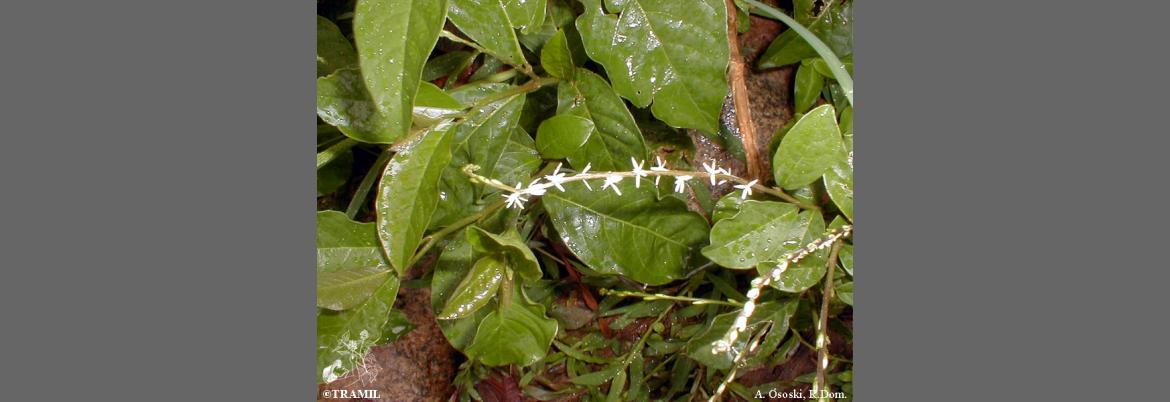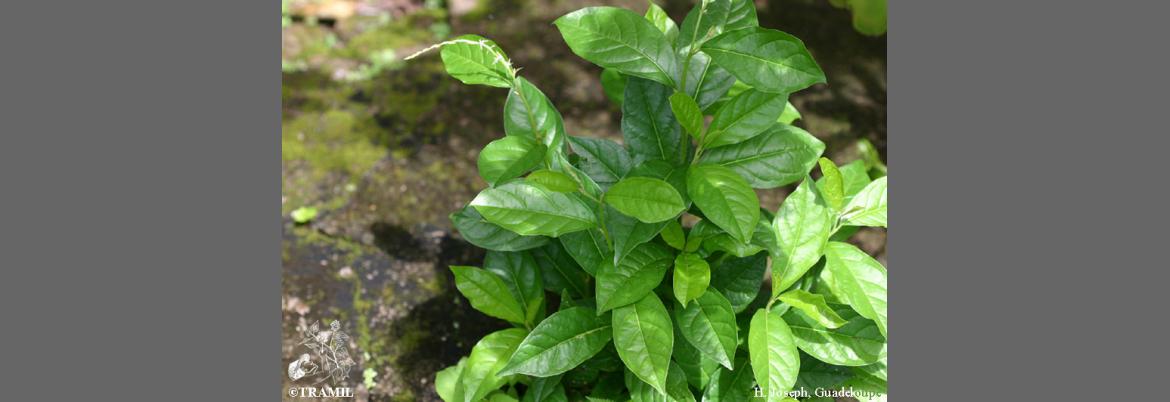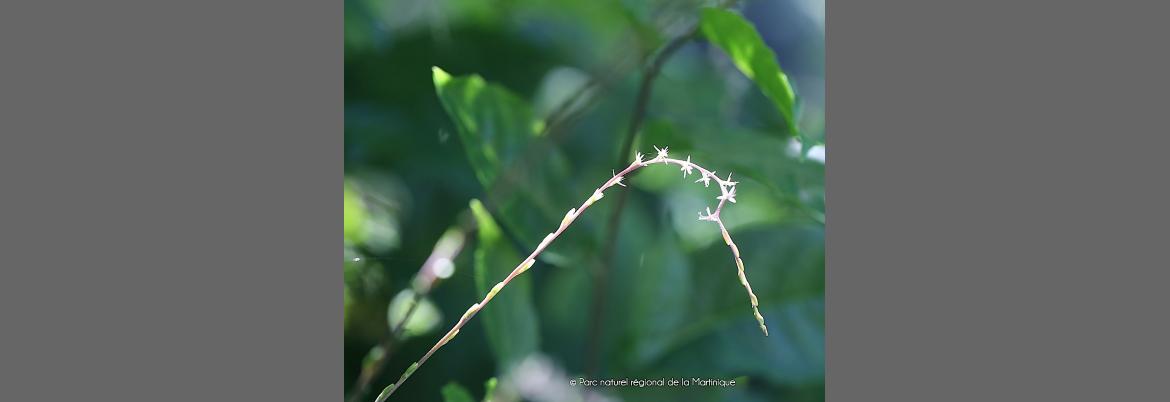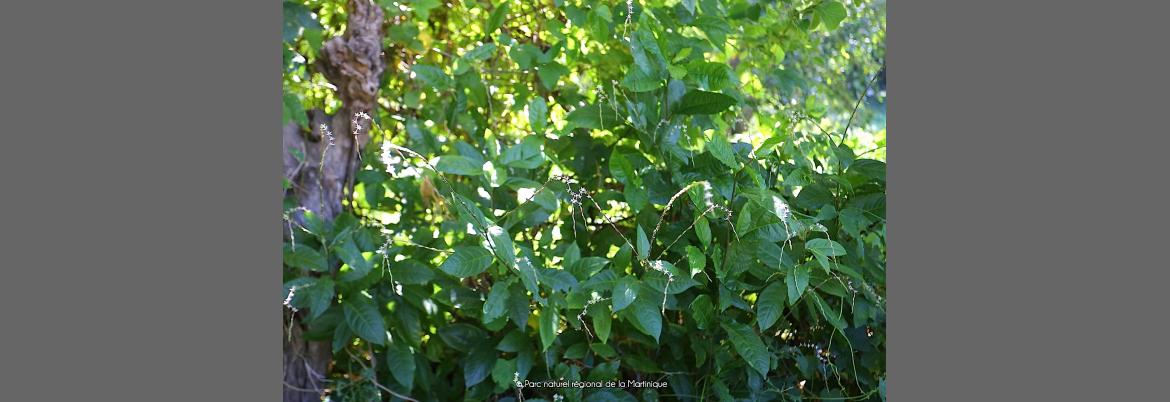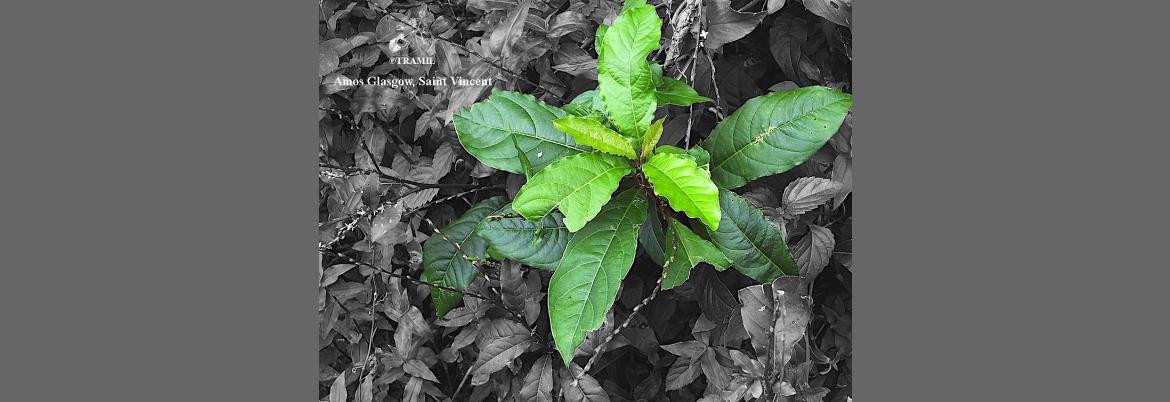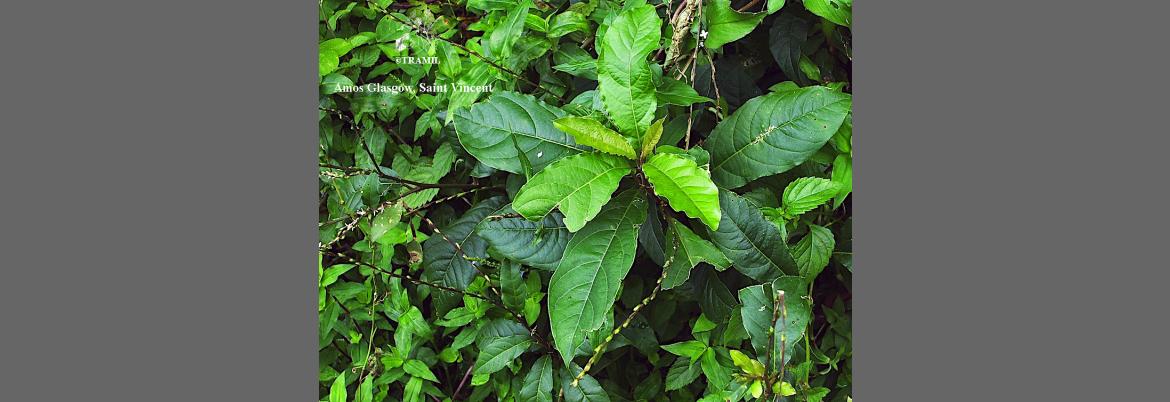1 GIRON L, 1988 Encuesta TRAMIL (Costa atlántica). Centro Mesoamericano de Tecnología CEMAT, Guatemala, Guatemala.
2 WENIGER B, ROUZIER M, 1986 Enquête TRAMIL. Service Oecuménique d'Entraide SOE, Port au Prince, Haïti.
3 WENIGER B, 1987-88 Encuesta TRAMIL. enda-caribe, Santo Domingo, Rep. Dominicana.
4 Castillo D, Rodriguez S, de los Santos C, Belen A, 2003 Encuesta TRAMIL (región Este). Dep. de Botánica, Jardín Botánico Nacional, Santo Domingo, Rep. Dominicana.
5 CHARLES C, 1988 TRAMIL survey. Movement for Cultural Awareness MCA, Roseau, Dominica.
6 LAGOS-WITTE S, Tinoco R, Merlo V, 1996 Encuesta complementaria TRAMIL. Laboratorio de Histología Vegetal y Etnobotánica, Dep. de Biología, Universidad Nacional Autónoma de Honduras UNAH, Tegucigalpa, Honduras.
7 GOMEZ H, GAITAN R, DIAZ F, 2003 Encuesta TRAMIL (Norte del departamento de Bolívar). Grupo de Productos Naturales, Facultad de Ciencias Químicas y Farmacéuticas. Universidad de Cartagena, Cartagena de Indias, Colombia.
8 SOLIS P, CORREA M, GUPTA M, 1995 Encuesta TRAMIL (Comunidades afro-caribeñas). Centro de Investigaciones Farmacognósticas de la Flora Panameña CIFLORPAN, Facultad de Farmacia, Universidad de Panamá, Panamá, Panamá.
9 GERMOSEN-ROBINEAU L, GERONIMO M, AMPARO C, 1984 Encuesta TRAMIL. enda-caribe, Santo Domingo, Rep. Dominicana.
10 Castillo D, Rodriguez S, de los Santos C, Belen A, 2003 Encuesta TRAMIL (Zambrana, Cotuí). Dep. de Botánica, Jardin Botánico Nacional, Santo Domingo, Rep. Dominicana.
11 WHO, 1991 Pautas para la evaluación de medicamentos herbarios WHO/TRM/91.4 (original inglés). Programa de Medicina Tradicional, OMS, Ginebra, Suiza.
12 WENIGER B, SAVARY H, DAGUIHL R, 1984 Tri phytochimique de plantes de la liste TRAMIL. Laboratoire de chimie des substances naturelles, Faculté de Médecine et de Pharmacie, Université d'Etat d'Haïti, Port au Prince, Haïti.
13 HEGNAUER R, 1973 Chemotaxonomy der Pflanzen. Basel, Schweiz: Birkhauser Verlag. 6:882.
14 SEGELMAN F, SEGELMAN A, 1975 Constituents of Petiveria alliacea. Lloydia 38(6):537.
15 DE SOUSA JR, DEMUNER AJ, PINHEIRO JA, BREITMAIER E, CASSELS BK, 1990 Dibenzyl trisulphide and trans-N-methyl-4-methoxyproline fromPetiveria alliacea. Phytochemistry 29(11):3653-3655.
16 FURONES JA, MORON F, PINEDO Z, 1996 Ausencia de la acción analgésica de la Petiveria alliacea (anamu) en ratones. Rev Cubana Planta Med 1(1):16-18.
17 DEL CARMEN RIVAS C, JIMENEZ M, AYALA L, CARILLO C, CABRERA Y, 1988 Actividad anti-inflamatoria y analgésica dePetiveria alliaceae. Informe TRAMIL. Centro de Investigación y Desarrollo de Medicamentos (CIDEM), La Habana, Cuba.
18 FURONES JA, MORON F, PINEDO Z, 1996 Ausencia de actividad antiinflamatoria del extracto acuoso liofilizado de Petiveria alliacea (anamú) en ratas. Informe TRAMIL. Rev Cubana Planta Med 1(2):34-37.
19 Martinez MJ, Betancourt J, Lopez M, MorejOn Z, Fuentes V, MORON F, PINEDO Z, Boucourt E, 2001 Actividad antimicrobiana y sobre varias preparaciones de músculo liso, in vitro, de la decocción liofilizada de hoja de Petiveria alliacea.Informe TRAMIL. Laboratorio Central de Farmacología, Facultad de Ciencias Médicas “Dr. Salvador Allende”, La Habana, Cuba.
20 GarcIa GM, Coto MT, GonzAlez CS, Pazos L, 1995 Velocidad del tránsito intestinal en ratones, del extracto acuoso de hoja fresca de Petiveria alliacea. Informe TRAMIL. Laboratorio de Ensayos Biológicos LEBI, Escuela de Medicina, Universidad de Costa Rica, San Pedro, Costa Rica.
21 ECHEVARRIA A, TORRES D, 2001 Efecto de un extracto de Petiveria alliacea Lin sobre el crecimiento de Giardia lamblia in vitro. Rev Cubana Med Mil 30(3):161-165.
22 CACERES A, GIRON LM, ALVARADO SR, TORRES MF, 1987 Screening of antimicrobial activity of plants popularly used in Guatemala for the treatment of dermatomucosal diseases. J Ethnopharm20(3):223-237.
23 CACERES A, LOPEZ BR, GIRON MA, LOGEMANN H, 1991 Plants used in Guatemala for the treatment of dermatophytic infections. 1. Screening for the antimicotic activity of 44 plant extracts. J Ethnopharm 31(3):263-276.
24 SAUVAIN M, 1989 Etude de plantes antiparasitaires du plateau des Guyanes en Amazonie: antipaludiques et antileishmaniens (Thèse de Doctorat). Université Paris-Sud, Paris, France.
25 RUFFA MJ, PERUSINA M, ALFONSO V, WAGNER ML, SURIANO M, VICENTE C, CAMPOS R, CAVALLARO L, 2002 Antiviral activity of Petiveria alliacea against the bovine viral diarrhea virus. Chemotherapy 48(3):144-147.
26 CACERES A, JAUREGUI E, HERRERA D, LOGEMANN H, 1991 Plants used in Guatemala for the treatment of dermatomucosal infections. 1: Screening of 38 plant extracts for anticandidal activity. J Ethnopharm 33(3):277-283.
27 LORES RI, PUJOL MC, 1990 Petiveria alliacea L. (anamu). Study of the hypoglycemic effect. Med Interne 28(4):347-352.
28 GERMANO DH, CALDEIRA TT, MAZELLA AA, SERTIE JA, BACCHI EM, 1993 Topical anti-inflammatory activity and toxicity of Petiveria alliacea. Fitoterapia 64(5):459-467.
29 FERRAZ MB, PEREIRA RB, IWATA NM, ATRA E, 1991 Tipi. A popular analgesic tea. A double blind cross-over trial in osteoarthritis. Clin Exp Rheumatol 9(2):205-206.
30 LIMA TCM, MORATO GS, TAKAHASHI RN, 1991 Evaluation of antinociceptive effect of Petiveria alliacea (guiné) in animals. Mem Inst Oswaldo Cruz 86(suppl.2):153-158.
31 GarcIa GM, Coto MT, GonzAlez CS, Pazos L, 1996 Toxicidad sub-crónica en ratones, del extracto acuoso de hojas frescas de Petiveria alliacea. Informe TRAMIL. Laboratorio de Ensayos Biológicos LEBI, Universidad de Costa Rica, San Pedro, Costa Rica.
32 GUERRA MJ, BETANCOURT J, LOPEZ M, MOREJON Z, BOUCOURT E, FUENTES V, MORON F, 2001 Toxicidad aguda (DL50) oral de la decocción de hojas jóvenes frescas de Petiveria alliaceaL.Informe TRAMIL. Laboratorio Central de Farmacología. Facultad de Medicina Dr. Salvador Allende. Ciudad de La Habana, Cuba.
33 GUERRA MO, OLIVEIRA AB, MAIA JGS, PETERS VM, 1989 Alteraçäo do desenvolvimento embrionário de ratos após tratamento com extratos aquosos de diferentes orgäos de Petiveria alliacea. Bol Centro Biol Reprod 8:17-22.
34 GERMANO DHP, SERTIE JAA, BACCHI EM, 1995 Pharmacological assay of Petiveria alliacea. II. Oral anti-inflammatory activity and gastrotoxicity of a hydroalcoholic root extract. Fitoterapia 66(3):195-202.
35 REYNOLDS J Ed., 1996 Martindale: The extra pharmacopoeia. Evaluated information on the world’s drugs and medicines. 31st ed. London, England: The Royal Pharmaceutical Society. p1678.
36 BUDAVARI S Ed., 2001 The Merck Index: an encyclopedia of chemical, drugs, and biologicals. 30th ed. Whitehouse Station, USA: Merck & Co., Inc. p181.
37 ALBORNOZ A, 1993 Medicina tradicional herbaria. Caracas, Venezuela: Editorial Instituto Farmacoterápico Latino S.A. p298.
38 CARBALLO A, 1995 Cálculo de concentración y dosis de las drogas vegetales TRAMIL: Mensuraciones farmacognósticas y aproximaciones técnico-clínicas. Laboratorio provincial de producción de medicamentos, Sancti Spiritus, Cuba.
39 GUERRA MJ, BETANCOURT J, LOPEZ M, MOREJON Z, BOUCOURT E, FUENTES V, 2001 Genotoxicidad in vivo: ensayo de morfología de la cabeza del espermatozoide en ratones de decocción liofilizada de hojas frescas de Petiveria alliacea L.Informe TRAMIL. Laboratorio Central de Farmacología. Facultad de Medicina Dr. Salvador Allende, Ciudad de La Habana, Cuba.
40 GUERRA MJ, BETANCOURT J, LOPEZ M, MOREJON Z, BOUCOURT E, FUENTES V. 2001 Genotoxicidad in vivo: ensayo de micronúcleos en médula ósea de decocción liofilizada de hoja fresca de Petiveria alliacea L. Informe TRAMIL. Laboratorio Central de Farmacología. Facultad de Medicina Dr. Salvador Allende, Ciudad de La Habana, Cuba.
41 GUERRA MJ, BETANCOURT J, LOPEZ M, MOREJON Z, BOUCOURT E, FUENTES V, 2001 Genotoxicidad in vitro: mediante el sistema de ensayo con Aspergillus nidulans de decocción liofilizada de hoja fresca Petiveria alliacea L. Informe TRAMIL. Laboratorio Central de Farmacología. Facultad de Medicina Dr. Salvador Allende, Ciudad de La Habana, Cuba.
42 GUERRA MJ, BETANCOURT J, LOPEZ M, MOREJON Z, BOUCOURT E, FUENTES V, 2001 Toxicidad aguda (DL50) intraperitoneal de la decocción liofilizada de hojas frescas de Petiveria alliaceaL.Informe TRAMIL. Laboratorio Central de Farmacología. Facultad de Medicina Dr. Salvador Allende. Ciudad de La Habana, Cuba.
43 CACERES A, LOPEZ B, GONZALEZ S, BERGER I, TADA I, MAKI J, 1998 Plants used in Guatemala for the treatment of protozoal infections. I. Screening of activity to bacteria, fungi and American trypanosomes of 13 native plants. J of Ethnopharmacology 62(3):195-202.


